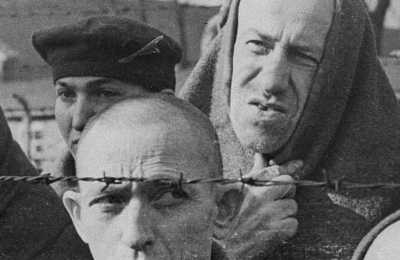Dutch women from Ravensbrück
A Swedish count has rescued thousands of women from Ravensbrück concentration camp, including 200 from the Netherlands. White buses with a red cross on the roof brought the mostly severely weakened women straight through the front area in Germany to Sweden. The women had no idea what happened when they were selected in the camp. "I tried not to show my fear of death, but I trembled and had difficulty breathing," said 22-year-old Selma Velleman. "Would we be on our way to the gas chambers? Was my luck gone now?"
The miraculous release with the end of the war in sight is thanks to Swedish Count Folke Bernadotte, Vice President of the Swedish Red Cross. Since last month, he negotiated with the SS leader Heinrich Himmler about the release of thousands of prisoners from a number of German camps. In these concentration camps, the situation worsens even further as the Germans are losing the war. The Nazis have become even more cruel.
Many prisoners also die in Ravensbrück, where the Russians are sometimes within earshot. Through malnutrition, exhaustion, but also through executions. Die hölle der Frauen is called the camp, the hell of women. The prisoners all hope they reach the end of the war. They have been through so much misery.
Like 23-year-old Gisela Söhnlein from Amsterdam. At the beginning of the war she was still studying law and ended up in the resistance. She was arrested and taken away. Gisela was allowed to join one of the first convoys to freedom. Before the camp she saw the white buses for the first time. "We didn't know where we were going. You let it get over you. We're free, we'll see. The main thing was that we were out of the camp." In one of the buses a group deployed Françaises de Marseillaise. "I will never forget how that sounded," said Thea Boissevain (26). "So impressive."
Selma Velleman later left in a truck. "I was offered a cigarette by a Swedish man." Nicht rauchen, "shouted one of the Aufseherinnen (guards) from a window. That Swedish man said," She has nothing to say about you at all. " Only then did I know I was free. " The tour went straight through the front area. The first night they stopped in a forest. Even though they are in the middle of the war, nature touched the women. "It was so beautiful there with a beautiful moon. It was great. We hadn't seen a blade of grass in months. Anemones everywhere," says Gisela.
Selma also remembers the daffodils and crocuses well. "There were new green leaves on the trees. Everything seemed so incredibly beautiful, after all we had only seen the gray dirt and griminess of the camp for a long time. We couldn't get our luck."
Happiness did not last long. They were shot at. Not by Germans but by Allies who thought they were a group of fleeing Germans. A few women were killed. They drove via Northern Germany to Denmark and on to Sweden. In liberated Denmark, the convoy was greeted exuberantly. They wave flags and distribute food.
Taken from the NOS (Dutch National Television) webiste












